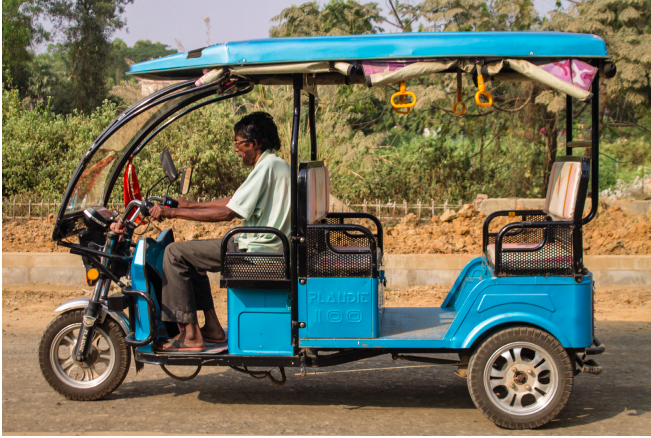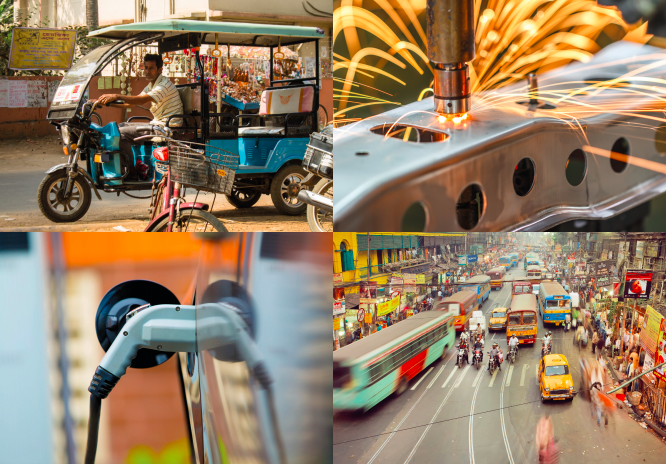India Charged To Be Global Hotspot For Electric Mobility, Points WEF And OMI Report
- Electric mobility holds tremendous promise for India, a global big four producer, to curb pollution and reduce reliance on import-dependent fossil fuel.
- New analysis finds Ten States and Union Territories (UT) are leading the way in building production, infrastructure and services to increase the momentum of electric vehicle usage in India.
- Adoption has been slow and will require government support to accelerate deployment.
- Report released by World Economic Forum and Ola Mobility Institute – Link to the report
New Delhi, India, 3 October 2019 – Following a strong central governmental push towards electric vehicles (EVs), India has the potential to become one of the largest EV markets in the world.
New analysis released today by the World Economic Forum, the International Organization for Public-Private Cooperation and the Ola Mobility Institute shows there are ten States and Union Territories building momentum for electric vehicle usage across three areas: manufacturing, infrastructure and services sectors. Given India’s role as part of the Global Big Four automotive players (among US, China, Japan), large-scale changes to the Indian market would impact the industry’s global footprint.

The report EV Ready India – Part 1: Value Chain Analysis of State EV Policies examines programmes and policies in Andhra Pradesh, Bihar, Delhi, Karnataka, Kerala, Maharashtra, Tamil Nadu, Telangana,Uttarakhand, and Uttar Pradesh. It highlights the possibilities for the sector and builds a common framework for analysing state EV policies through trend analysis of value chains.
“With many more states in the process of designing their EV policies, policymakers, businesses, and practitioners alike can use this framework to analyse state policies for sustainability and longevity,” said Christoph Wolff, Head of Mobility, World Economic Forum. “The role of government is crucial for accelerating adoption. Right now, the uptake of electric vehicles is slow due to the high-upfront cost and range anxiety. But, long-term investment in R&D will create sustained growth.” India has taken up an ambitious target to become a $5 trillion economy by 2025,” said Anand Shah, Head, Ola Mobility Institute. “the country has placed equal importance on growth that is environmentally sustainable. Mobility holds significant promise for India to enable low-carbon solutions. OMI, in partnership with the World Economic Forum, intends for this framework to support the country’s readiness to go electric.”
While the approaches vary amongst these states and territories, the report highlights three emerging trends. The first is that most states aspire to be manufacturing hubs for EV and EV components. Production of clean-fuel batteries, recycling and storage are incentivised across the board. This aligns well with the national Make in India agenda and can provide case studies for how to roll out similar production facilities. The Uttar Pradesh and Maharashtra EV policies emphasise heavily on promoting EV manufacturing, for example.

The second trend, infrastructure development, was largely a response to anxiety around the range of EVs: ie most state has provisions for installations of charging infrastructure in public and private places. Uttar Pradesh is targeting 2 lakh charging stations by 2024. Andhra Pradesh is targeting 100% electrification of buses by 2029.
The third trend is an emphasis on the services the EV value chain can provide through public awareness. These include skilling programmes in Tamil Nadu, fiscal incentives in Maharashtra and non-fiscal incentives like retrofitment services in Telangana. These are all examples of how states and territories try to connect the consumers and manufactures.
Next steps
Fuelled by the national agenda of electrification and bolstered by government-led initiatives, the public and private sectors alike have commenced their respective and joint transitions to electric mobility. But, the uptake of electric vehicles has been slow; vehicles are costly not only upfront but also on a lifecycle cost basis. In order to overcome these challenges, research and development must be stimulated by setting up funds for research centres and centres of excellence. This would lend to strong manufacturing base. Given the nascent market, the role of government is crucial for accelerating adoption, diffusion and deployment of electric mobility. “For a price-sensitive market like India, developing incentives for electric (clean) kilometres run versus electric vehicles purchased makes economic sense and is suggested to be the guiding principle for the national strategy,” Wolff said.
About Ola Mobility Institute:
Ola Mobility Institute (OMI) is a policy and social innovation think-tank of Ola that is focussed on developing knowledge frameworks at the intersection of mobility and the public good. The Institute concerns itself with public research on the social and economic impact of mobility as a service, the climate footprint of mobility innovations, skill development and job creation, transportation-oriented urban planning and the digitization of mobility.


